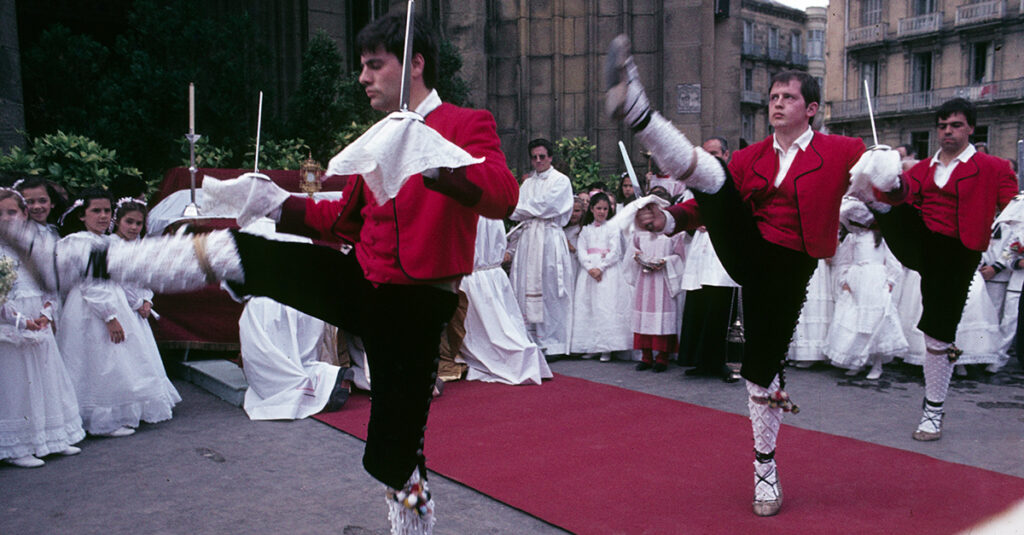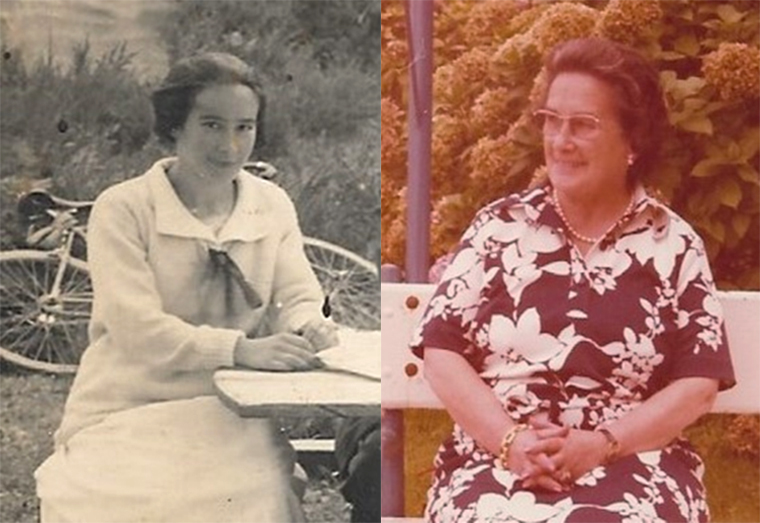Archives

Ezpata Dantza (sword dance) for Corpus Christi performed by Goizaldi Dantza Taldea (Donostia, 06/06/1985). Photo: E. X. Dueñas
“Traditional” and/or “Basque” is one way of pigeonholing the dance performed by groups here. That has not always been the case and that is also true of how they are performed, however hard people champion the authenticity and, therefore, the inflexibility of steps and shapes down through the centuries.
On 14 March, the book that the author Jule Gabilondo Maite wrote in Saint-Jean-de-Luz (Labourd) between 1937 and 1938 was presented in the cultural centre in the Torrebillela tower house (Mungia).
Jule Gabilondo Arruza-Zabala was born in Mungia on 29 January 1902. Her father, Juan Gabilondo Azurmendi, a doctor, was from Zegama (Gipuzkoa) and her mother, Leonor Arruza-Zabala Etxaburu, from Gueñes (Bizkaia). Her maternal grandfather, Raimundo Arruza-Zabala, was born in Mungia, but married in the town of Gueñes and returned to his birthplace with his family several years later. (more…)
![Image taken from Bidegileak [Forerunners], 4.](https://www.labayru.eus/wp-content/uploads/2019/03/bidegileak-portada-bizentamogel-b.jpg)
Bidegileak [Forerunners], 4. Euskal Biblioteka. Labayru Fundazioa.
Vicenta Antonia Moguel (1782–1854) is the first known woman to write in Basque. She was the youngest sister of Juan José Moguel (1781–1782), also a writer. A number of circumstances are essential for a person to become a writer, among others, writing skills, enjoyment of writing, creative talent, and intelligence. In the case of Vicenta Moguel, family circumstances, specifically her father’s early death, prompted her uncle, the famed writer Juan Antonio Moguel (1745–1805), to take care of the education of his niece and nephew. (more…)


